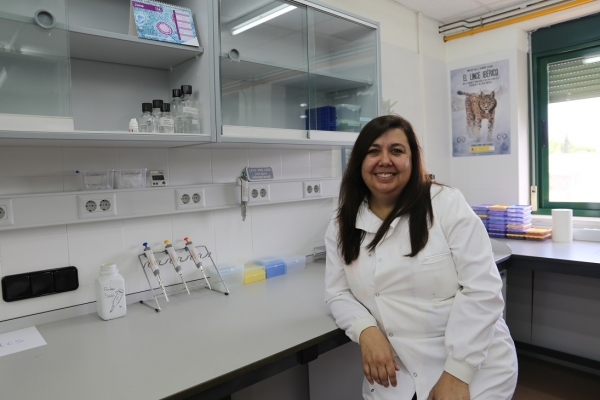Scent marking is a communication strategy for many mammals. These scentmarks provide key information about the animals that leave them, with those animals that detect them often changing their behavior inresponse to them. This chemical communication has been studied in depth when it comes to males, but, in the case of females, scant attention had been paid to how they use it, to be receptive to males, or to communicate with their offspring. This dynamic had given rise to a knowledge gap regarding communication between females, which, in social species where they have to share territory, is fundamental, not only in terms of competition, but also cooperation.
A clear example of this shortcoming in knowledge was that on female rats, which are a species very often studied in medical studies to understand animals' cognitive and psychological behavior. This situation is being turned around thanks to a new study published in the journal PNAS in which University of Cordoba researcher Guadalupe Gómez Baena worked together with a team from the University of Liverpool to demonstrate that female rats communicate with each other through scent marks deposited in their environments. The direct study of the marks left by populations of Norway rats (Rattus norvegicus) demonstrates that use different, complex signals to communicate with each other.
"It tends to be thought that rats are very similar to mice, and that the two species use the same method to communicate. Our article shows that the communication strategy is completely different in these species. Moreover , females have never received much attention, so our article tries to shed light on communication between females,"explained the researcher with the UCO's Department of Biochemistry and Molecular Biology.
At this point MUP (Major Urinary Proteins) enter into play, key in the transmission of odors through marks, and functioning differently in mice (found in the urine with which they mark) as opposed to in rats (whose marks contains sebaceous secretions, in addition to urine).
"In this work we analyze, for the first time, the marks that the animals deposit, finding that in females they contain a great variety of proteins from the clitoral glands, including a shorter version of MUPs," says Gómez Baena. This article demonstrates that connection between the clitoral glands, responsible for these sebaceous secretions, urine, and the marks left by rats, proving that these proteins, shorter in females, come from the clitoral glands. Thus, for the marks of the females to arouse interest in other females, the combination of urine and the secretion from the clitoral glands, is necessary.
What do females "talk about?"
When and why do female interrelate? To find out whether females use marks differently, depending on whether they are in heat, or the genetic identity of their counterparts, behavioral tests were carried out to determine the social context in which the females communicate.
Regardless of whether they are in heat, or the stage, females communicate with others by marking territory, because those marks may be not only to compete, but to cooperate as well. In terms of competition, they also use that communication to verify whether their counterparts are in heat, which may be beneficial during mating periods.
When responding to different marks, genetic background also matters: females increase their marking in response to that of other females of the same breed, which could reflect a motivation to communicate with females of the same colony.
This study focuses on communication between female rats, compared to the secondary position of the male here, expanding our knowledge of a species widely used in experimentation, and demonstrating the need to study the specificities of the females of other species.
Reference:
Guadalupe Gómez-Baena Kieran C. Pounder and Josiah O. Halstead and Sarah A. Roberts and Amanda J. Davidson and Mark Prescott and Robert J. Beynon and Jane L. Hurst (2023) Unraveling female communication through scent marks in the Norway rat. Proceedings of the National Academy of Sciences. Vol 120 (25) e2300794120 https://doi.org/10.1073/pnas.2300794120


